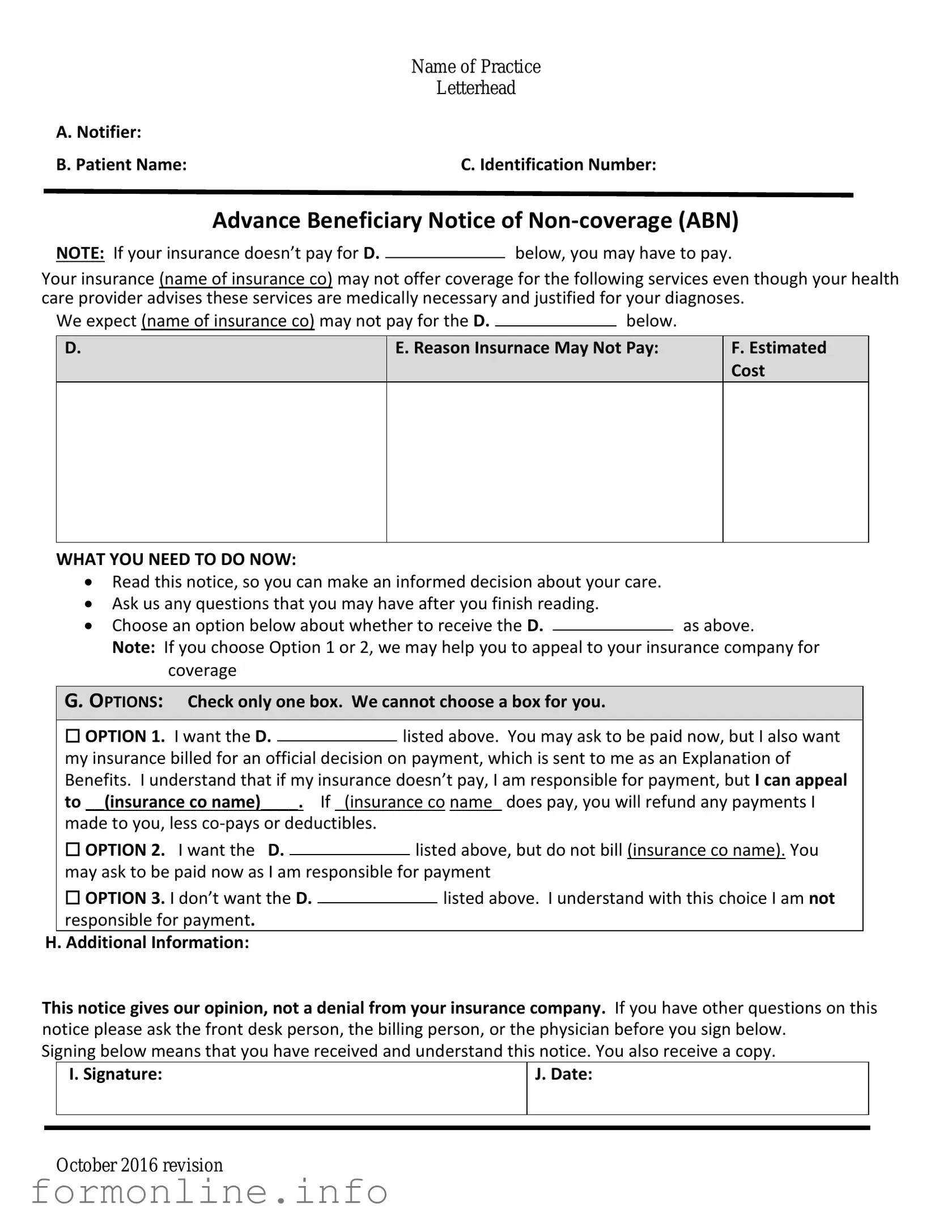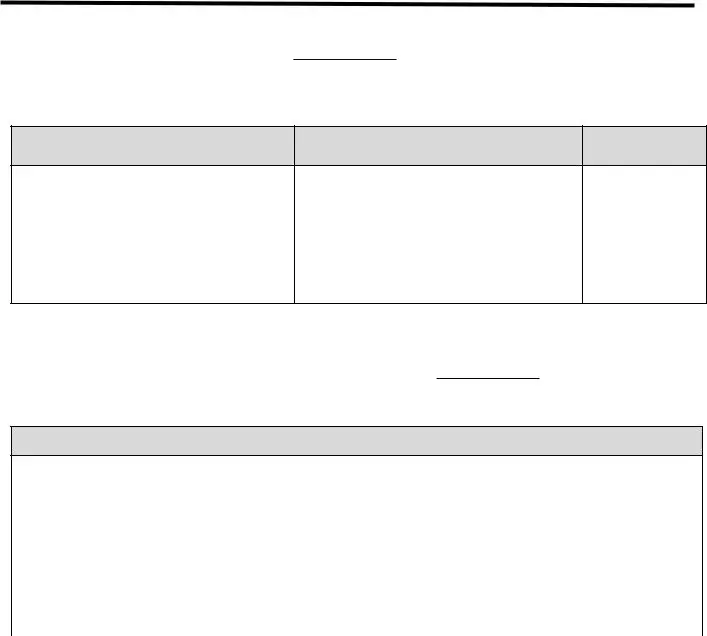The Advance Beneficiary Notice of Non-coverage (ABN) is similar to the Medicare Outpatient Observation Notice (MOON). Both documents inform patients about their coverage status. The MOON specifically alerts patients when they are under observation status in a hospital and may not be covered for certain services. Like the ABN, it helps patients understand their potential financial responsibility and encourages them to ask questions about their care options.
To ensure a proper understanding of rental agreements, consider reviewing a helpful resource on the Florida Residential Lease Agreement form, which outlines vital terms for tenants and landlords alike. You can access it here for further information.
Another document that resembles the ABN is the Notice of Medicare Non-Coverage (NOMNC). This notice is provided to patients when a Medicare-covered service is about to end, such as skilled nursing facility care. It informs patients that their coverage will stop and outlines their rights to appeal the decision. Both the NOMNC and ABN aim to keep patients informed about their care and potential costs, ensuring they can make informed decisions.
The Skilled Nursing Facility (SNF) Notice of Non-coverage is also similar to the ABN. This document specifically addresses patients receiving care in a skilled nursing facility. It notifies them when their Medicare coverage for skilled services will cease. Just like the ABN, it gives patients a chance to understand their options and the financial implications of their care.
The Home Health Care Notice of Non-coverage serves a similar purpose. This notice is issued to patients receiving home health services when coverage is about to end. It explains the reasons for non-coverage and provides information on how to appeal. Like the ABN, it ensures that patients are aware of their rights and the potential costs they may incur.
The Medicare Summary Notice (MSN) is another document that shares similarities with the ABN. The MSN is a quarterly statement that details the services patients received, what Medicare paid, and what patients may owe. While it is not a notice of non-coverage per se, it helps patients understand their financial responsibilities and coverage status, similar to the ABN's role in informing patients about potential out-of-pocket costs.
Lastly, the Explanation of Benefits (EOB) from private insurance companies is comparable to the ABN. The EOB outlines what services were covered, the costs incurred, and any amounts the patient may owe. While the ABN specifically addresses non-coverage scenarios, both documents serve to keep patients informed about their healthcare costs and coverage, empowering them to make educated decisions regarding their care.

